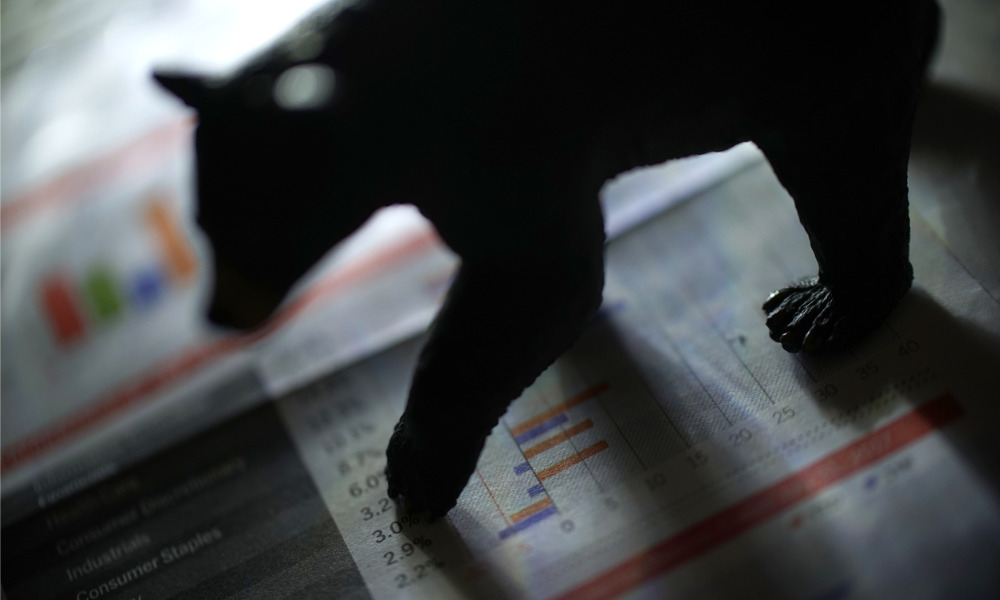Fixed-income specialist explains why and how impact of next cyclical bear market in fixed income can differ from prior episodes

While the case for a cyclical bond bear market isn’t exactly a slam dunk at this point, it’s crossed the line from possibility to probability as the corpus of supporting evidence continues to grow. With that said, investors would be wise to assess the potential negative impact of such a scenario – and on balance, it’s likely not to be too painful.
In a recent blog post, David Stonehouse, Senior Vice-President and Head of North American and Specialty Investments at AGF Investments, said peak-to-peak or trough-to-trough timelines for U.S. bond market cycles over the past three decades have tended to last approximately four years, with the bearish peak-to-trough phase lasting 21 months on average. During those periods, 10 year- yields have risen by an average of 110 basis points, and yield-curve steepening has tended to start before recessions and continue during and after.
The upshot is that the next bear cycle, should it behave like its predecessors, can last between 18 and 30 months, with 10-year yields rising by some 110 basis points. “Yet history, while it often rhymes, rarely repeats,” Stonehouse said, adding that the current cyclical bear could deviate in several crucial ways.
He referred to the delayed rise in 10-year yields – the upward action came after the recession began between March and April – and its lower-than-expected magnitude of 40 basis points as of November 9. Some reasons for those aberrations, he said, could be the rapid onset of the recession, the unique policy response to the pandemic, and the widely-held assumption that short rates will stay near zero for the foreseeable future.
“[I]t’s possible a more significant yield surge has just been delayed rather than dampened,” Stonehouse said, pointing to possible tailwinds from a more committed application of modern monetary theory (MMT) and the Federal Reserve’s move to average inflation targeting.
To estimate the impact of a cyclical bond market on investors, he began by assuming a 100-basis-point rise in 10-year Treasury yields on a one-year time horizon – close to the historical norm of 110 basis points – and no rise in two-year yields, in keeping with central banks’ vow to keep short-term rates depressed at the zero lower bound for a number of years.
“For long bonds with maturities of 20 years or more, that would translate into a price decline of about 20%, for a total loss (net of coupon) of more than 18%,” he said. “Yet on the shorter end of the curve, the declines would be far less – just under 5% for 7-10 years, 2% for 5-7 years, and a net positive return for 0-5 years (all net of coupon).”
Given the current tilt of the U.S. Aggregate Bond Index toward shorter-term securities – 35% in 0 to 3-years, 25% in 3- to 5-year issues, and just 20% in 10-year bonds or longer – he said the price declines in long end of the curve would have a muted impact on the overall market. The overall weighted-average impact, based on the hypothetical scenario, would be a decline of less than 4%.
The impact of a 100-basis-point rise in 10-year yields could be dampened even further, he said, by movement in the credit space. Since corporate bonds represent some 30% of the aggregate index, he said a tightening in credit spreads should produce returns in corporates to offset declines in Treasuries, creating an overall positive effect. Depending on how well corporate bonds do, he projected that the index would experience an impact of around -3%.
“Finally, we would not underestimate the challenge the economy still faces of fully returning to pre-pandemic output levels,” Stonehouse said, adding that central bank-purchases of longer-dated bonds could keep the yield curve contained to a greater degree than previous events would lead investors to expect. “As a result, bonds may not experience as large a rise in yields as in prior episodes.”



